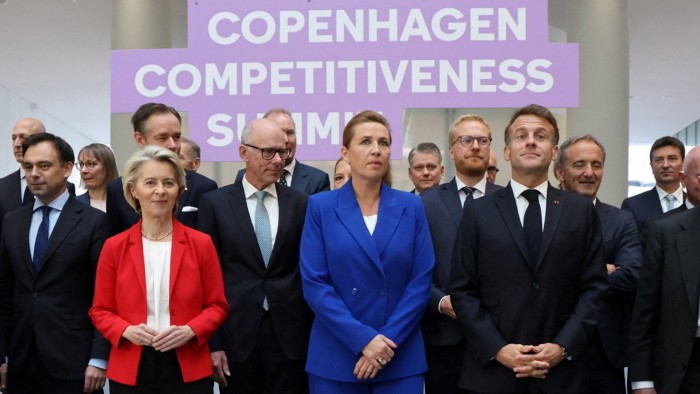Stay informed with free updates
Simply sign up to the EU economy myFT Digest — delivered directly to your inbox.
At the heart of Europe’s panic about “competitiveness” is an inferiority complex vis-à-vis the US and China. Such panics arise on a regular basis: since 2022, Europeans have sounded the alarm over the US Inflation Reduction Act, Chinese electric vehicle sales and artificial intelligence training.
Panic can be salutary. Policymakers’ attention has increasingly converged on a real inferiority: European economies invest less in cutting-edge technology than America’s or China’s. Europe certainly needs to invest more in innovation, but it will only succeed by finding its own way to do so, not by duplicating Silicon Valley or Chinese planning.
Consider why the US is so good at producing innovation, and China so good at sometimes leapfrogging it. Extreme inequality in the US creates numerous billionaires who are willing to throw money at anything exciting, in the knowledge that many projects will fail. But they have the drive to find the ones that will change the world. It is a casino economy — and the one thing casinos reliably supply is risk-taking capital, just what Europe lacks.
China displays a similar recklessness within state structures. Beijing shares with US billionaire-entrepreneurs a combination of huge scale and scant accountability for how resources are deployed. Like American billionaires, the Chinese government takes big bets that cause bubbles and busts. “Involution” — subsidised capacity expansion so fierce that it drives entire sectors into the red — is China’s equivalent of US venture capitalists’ many failed projects. In both cases, rapid innovation has emerged amid the waste.
Europe is different. It has fewer extremely rich people and more of its wealth is managed with greater caution and conservatism. Its social model and cultural history is simply less conducive to recklessness. Moreover, the incomplete integration of the European economy and the fragmented regulations and labour protections of its many nations shrink the rewards to risk-takers and raise the costs of failure.
Still, Europe urgently needs to find a way to increase risk capital, or it will continue to see innovative work move across the Atlantic just as it is on the cusp of successful scaling. Despite the good work done by founders of EU companies, from Spotify to Skype, Europe will not change its social and economic model to create a Silicon Valley-style billionaire class. Nor will its democratic publics allow China’s enormous redirection of public resources at the say-so of top leaders — and rightly so. Europe must find its own way to make capital more risk-loving.
The problem is not a shortage of seed funding for new ideas; the environment for start-ups keeps improving. Nor is there an overall lack of capital; the EU sends €300bn-€400bn worth of net savings to other economies every year. But these large pools of savings are not offered up as the risk-tolerant capital innovative companies need to grow fast.
This is what economists call a market failure. European savers are more risk-averse than what would most benefit the economy and society as a whole. And the answer to market failures are corrections through policy interventions. If Europeans are too risk averse for their own good, governments must seek out more risk for them. This will require policies that convert the safety Europeans savers crave into equity or equity-like investments. Europe is known for being bank- and credit-dominated. But there is a long pedigree for public policies to turn savings into venture-like capital in Europe, from France’s “Livret A”, which has financed public infrastructure for 200 years, to Sweden’s equity-heavy pension funds.
This is the tradition that needs to come to the fore. It will require scaling up to boost risk-capital schemes where they exist, introducing them where they don’t, and supplementing them with mechanisms to generate risk capital between and not just within EU countries. Some of this is happening, but much more ambition is needed to bridge Europe’s innovation gap.
One game-changer would be an EU debt-funded sovereign wealth fund investing in venture funds for innovative companies ready to scale up across Europe. This would not be “eurobonds” for EU expenses or transfers to poor members, but for giving European innovators the risk capital they need. Nearly as bold would be to tilt the incentives for existing financial institutions to devote more of their balance sheets towards risk capital — or invert most tax systems’ bias in favour of debt finance over equity. Some will object that this exposes the public sector to risk. But that’s the point. If there is anything Europe does best, surely it is to pool individual risks for the common good?
martin.sandbu@ft.com

